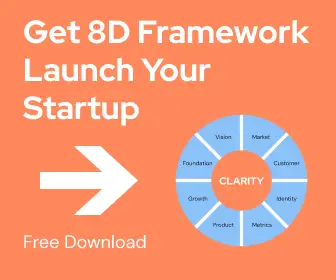Experiential marketing, or engagement marketing, is a marketing strategy that has become increasingly popular. By directly engaging consumers and having them participate in the brand experience, it goes beyond a traditional marketing strategy that promotes products and services to consumers. Read on to learn more about experiential marketing.
What is Experiential Marketing?
Experiential marketing, often called engagement marketing, is a specific type of marketing strategy that aims to directly engage consumers while encouraging them to participate in the brand experience. By creating unique customer experiences, experiential marketing tries to develop deep emotional connections with customers.
By doing so, experiential marketing goes way beyond traditional marketing. In traditional marketing, consumers are passive receivers of the brand’s message. While there may be interaction involved, there is usually no direct engagement. In experiential marketing, consumers are involved directly, such that they become a part of the brand experience, which allows them to develop a much stronger relationship with the consumer.
Experiential marketing arose from the fact that consumers’ needs vary. Consumers’ attitudes have shifted over time. Quality products are often no longer sufficient to satisfy them. When they buy, customers expect a complete and one-of-a-kind experience.
Companies are therefore searching for new marketing strategies to serve changing and more complex consumer needs. The product is no longer at the center of the strategy (product-centric), but rather the consumer (user-centric).
How to Apply an Experiential Marketing Strategy?
The large majority of brands use event communication to create positive customer experiences. According to event marketers, the goal is to immerse customers in hyper-reality and thereby apply their experiential marketing strategy.
Retailers use this logic when they dramatize the point of sale. It enables the creation of emotions in the consumer. This contributes to customer loyalty and the company’s competitive differentiation. These two elements are critical in developing a relationship with visitors and establishing trust.
The use of consumers’ five senses is critical in experiential marketing. These senses are the gateway into hyper-reality. This quasi-alternative reality can also be created by disconnecting the visitor from reality. This can be accomplished in a physical store through the actual sales act and the offer.
Not only the consumers’ senses are the focus of an experiential marketing strategy. In addition to sensory marketing, we use emotions in an emotional marketing logic. Let’s now take a closer look at these two elements of an experiential marketing strategy: Emotional Marketing and Sensory Marketing.
Emotional Marketing
The practice of emotional marketing relies on the fact that humans are driven by emotion as much as by reason. In sales, the decisive customer decision is usually triggered by the visitor’s emotions, not by his reason.
This is equivalent to activating Daniel Kahneman’s system of the speeds of thought:
- System 1 is based on the human brain’s automation. Impulsivity and immediacy trump logic, and the consumer is guided by his habits and emotions.
- System 2 is based on reflection. The consumer will make decisions in an analytical and thoughtful manner. This process takes more time.
Emotion is also an effective way to increase purchases and build loyalty. Developing a connection, maintaining communication, and building trust is a bet on the visitor’s emotions:
- If the customer feels good at the point of sale or online store, it is an emotional factor, in addition to appreciating the products sold.
- If the customer sees the benefits and costs and compares them, it is a rational factor.
The primary goal of this aspect of experiential marketing is to create a bond of affection between your brand, customers, and products. This strategy is especially effective because emotions drive action more than logic.
Appealing to emotions is usually more effective than reasoning with the prospect. Furthermore, it assists you in differentiating yourself from your competitors in the minds of consumers.
Thus, appealing to the emotions of your customers helps to ensure that they remember your brand and your products.
Finally, surprise and the unexpected are critical components of emotional marketing. A new experience for a customer can surprise them. Extraordinary and out-of-the-ordinary experiences allow the consumer to disconnect from his daily life.
Sensory Marketing
Sensory marketing is a type of experiential marketing that is based on the visitor’s senses. Traditionally, when we discuss the senses, we refer to:
- Hearing
- Smell
- Sight
- Taste
- Touch
These are known as “external” senses, but humans also have four “internal” senses:
- Thermoception: The ability to feel temperature
- Nociception: The ability to feel pain
- Proprioception: Perception of the position of our body parts
- Balancing: The ability to keep our balance and avoid falls
You are not going to make consumers fall to stimulate equilibrioception when developing sensory and experiential marketing strategies. It is possible, however, to stimulate thermoception. In addition to the five external senses, manipulating the ambient temperature can be used to create an atmosphere.
Online stores are unable to use “internal” senses. E-tailers are powerless to influence them. As a result, the consumer is the sole master of these senses, and he places himself in the conditions of purchase.
The Fusion of Senses and Emotions to Create the Optimal Customer Experience
Experiential marketing is a hybrid of sensory and emotional marketing. As a result, implementing an experiential marketing strategy entails several steps. First, consider the various senses:
View
Colors are widely used by marketing professionals, whether online or in person. Because not all senses can be stimulated in web marketing, eye stimulation is widely practiced online.
The colors used in a store, whether online or in person, are critical. Indeed, sight is one of the few remaining senses that bridges the physical and digital worlds.
Color is the first stimulating element in the discovery of a store. This is how you learn about color psychology and incorporate all its components. Color psychology is an integral part of experiential marketing because it allows you to direct the consumer’s attention, albeit indirectly, to moods or emotions. Thus:
- Red: represents passion and hunger.
- Blue: represents security and confidence.
- Green: represents nature and balance.
- Yellow: represents innovation and optimism.
- Orange: represents energy and celebration.
- Purple: represents authority and spirituality.
- Black: represents sophistry.
- etc.
Attention, colors do not represent the same things in all cultures. Therefore, be careful to stay away from cultural blunders:
- Red: This color is highly valued by the Chinese, who frequently use it, in contrast to the Middle Eastern countries, which regard it as a color of danger and evil.
- Blue: This color is perceived similarly in all cultures.
- Green is a color that is universally associated with nature, but in some cultures, such as Chinese culture, it is associated with infidelity or eternal life. Green is also associated with corruption in North Africa, among other things, depending on the culture.
- Yellow: in North America, it represents happiness, whereas in South Africa, it represents death and mourning.
- Etc.
So be cautious about the emotions you want to convey to customers.
Hearing
Hearing is crucial in the implementation of an experiential marketing strategy. For example, little noise at a store may make a client feel uneasy or work nearby may play an untimely part in the consumer’s thoughts.
The traditional method of activating the ear is mostly through the use of music. Music has a significant impact on consumer behavior. Certain forms of music have previously been proven to have a minor impact on the listener’s behavior. For example, the tempo affects the pulse rate, which is why streaming sites include “sports” or “work” playlists.
The usage of uplifting music genres, such as pop, in the context of business, both online and offline, serves to put the visitor in a good state of mind.
Choose the appropriate music for the desired setting.
Smell
The scent of a location might generate a sales-friendly environment. This is referred to as olfactory marketing, and it is part of the logic of experiential marketing. The sense of smell, unlike the other senses, is directly related to the parts of the brain that govern memories, emotions, and affectivity.
Smell is thus one of the senses that should not be overlooked. The goal is to associate a product with a scent. When you hear or see a brand’s products and merchandise, you will be able to envision the smell, demonstrating a relationship between the customer and the company and its products.
Taste
There are a few businesses where taste may be a part of the purchasing experience and be directly tied to the things supplied. As a result, several sectors incorporate taste as part of their experiential marketing.
They allow people to sample the product before purchasing it in businesses associated with food and therefore to taste, both to test it and to associate the flavor with the brand and its products.
Touch
Digitalization has completely disrupted tactile marketing. When purchasing from an E-Commerce business, it is difficult to touch the products from a distance. The experience, on the other hand, might be delivered post-purchase, with pleasant or unique packaging to the touch.
Touch may be used to achieve two main goals:
- Instrumental: Providing extra information about the desired result to obtain (for example, the hardness of a substance)
- Autotelic: To attain fulfillment (the softness of a fabric, for example).
Examples of Experiential Marketing
BBC in Oslo (Norway)
The BBC opted to promote awareness in Oslo by bringing animals into the city center via bus shelters.
The association conducted experiential marketing through the use of screens. The use of the perspective and the production of the surprise effect allowed the participants to become more aware of the presence of the animals.
Volkswagen in Stockholm (Sweden)
Using experiential marketing in Sweden, the vehicle manufacturer hoped to establish positive habits among subway riders in the city.
The company placed sound buttons on the steps close to the escalator thereby aimed at the humor of people passing by. While contributing to improved behaviors, consumers are at the same time engaged in an experience that connects them with the brand.
Conclusion
Companies must learn to take a product-centric approach and put the customer at the center of their concerns by focusing on consumer situations. Experiential marketing allows just that.
In practice, you may put yourself in the shoes of a consumer who walks into your store or business. You must then consider all of the phases before the purchase and aim to optimize each of them to provide the customer with a comprehensive experience.
The customer experience in experiential marketing must be participatory, emotional, and engaging. Remember to avoid negative components as well, because the entire experience should be enjoyed in a favorable environment that stimulates the purchase. A little flaw might derail the customer’s absorption in the experience.
It is also critical to understand how to include the client in the experience process. Ensure that the customer is completely detached from his surroundings. This way, he will be able to absorb the event completely.
The issue of flow, according to several experts, is equally significant in experiential marketing. The experience must be the result of a series of flow experiences. This sequence of flows will help you to grow the customer’s mental state, immerse him in the experience, and make him completely forget about anything else.








